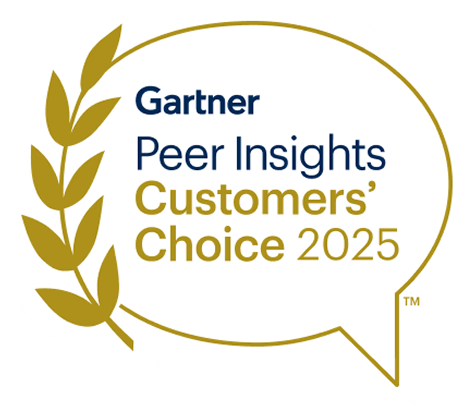Overcoming Gartner’s Obstacles for DSPM Mass Adoption
Gartner recently released its much-anticipated 2024 Hype Cycle for Data Security, and the spotlight is shining bright on Data Security Posture Management (DSPM). Described as having a "transformative" potential, DSPM is lauded for its ability to address long-standing data security challenges.
DSPM solutions are gaining traction to fill visibility gaps as companies rush to the cloud. Best of breed solutions provide coverage across multi-clouds and on-premises, providing a holistic approach that can become the authoritative inventory of data for an organization - and a useful up-to-date source of contextual detail to inform other security stack tools such as DLPs, CSPMs/CNAPPS, data catalogs, and more, enabling these to work more effectively. Learn more about this in our latest blog, Data: The Unifying Force Behind Disparate GRC Functions.
However, as with any emerging technology, Gartner also highlighted several obstacles that could hinder its widespread adoption. In this blog, we’ll dive into these obstacles, separating the legitimate concerns from those that shouldn't deter any organization from embracing DSPM—especially when using a comprehensive solution like Sentra.
Obstacle 1: Scanning the Entire Infrastructure for Data Can Take Days to Complete
This concern holds some truth, particularly for organizations managing petabytes of data. Full infrastructure scans can indeed take time. However, this doesn’t mean you're left twiddling your thumbs waiting for results. With Sentra, insights start flowing while the scan is still in progress. Our platform is designed to alert you to data vulnerabilities as they’re detected, ensuring you're never in the dark for long. So, while the scan might take days to finish, actionable insights are available much sooner. And scans for changes occur continuously so you’re always up to date.
Obstacle 2: Limited Integration with Security Controls for Remediation
Gartner pointed out that DSPM tools often integrate with a limited set of security controls, potentially complicating remediation efforts. While it’s true that each security solution prioritizes certain integrations, this is not a challenge unique to DSPM. Sentra, for instance, offers dozens of built-in integrations with popular ticketing systems and data remediation tools. Moreover, Sentra enables automated actions like auto-masking and revoking unauthorized access via platforms like Okta, seamlessly fitting into your existing workflow processes and enhancing your cloud security posture.
Obstacle 3: DSPM as a Function within Broader Data Security Suites
Another obstacle Gartner identified is that DSPM is sometimes offered merely as a function within a broader suite of data security offerings, which may not integrate well with other vendor products. This is a valid concern. Many cloud security platforms are introducing DSPM modules, but these often lack the discovery breadth and classification granularity needed for robust and accurate data security.
Sentra takes a different approach by going beyond surface-level vulnerabilities. Our platform uses advanced automatic grouping to create "Data Assets"—groups of files with similar structures, security postures, and business functions. This allows Sentra to reduce petabytes of cloud data into manageable data assets, fully scanning all data types daily without relying on random sampling. This level of detail and continuous monitoring is something many other solutions simply cannot match.
Obstacle 4: Inconsistent Product Capabilities Across Environments
Gartner also highlighted the varying capabilities of DSPM solutions, especially when it comes to mapping user access privileges and tracking data across different environments—on-premises, cloud services, and endpoints. While it’s true that DSPM solutions can differ in their abilities, the key is to choose a platform designed for multi-cloud and hybrid environments. Sentra is built precisely for this purpose, offering robust capabilities to identify and protect data across diverse environments (IaaS, PaaS, SaaS, and On-premises), ensuring consistent security and risk management no matter where your data resides.
Conclusion
While Gartner's 2024 Hype Cycle for Data Security outlines several obstacles to DSPM adoption, many of these challenges are either surmountable or less significant than they might first appear. With the right DSPM solution, organizations can effectively overcome these obstacles and harness the full transformative power of DSPM.
Curious about how Sentra can elevate your data security?
<blogcta-big>









.webp)

.webp)


